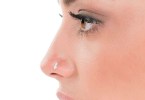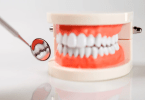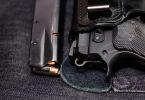Wearing a newborn baby carrier comes with many benefits, from the proper support of your baby for natural posture to strengthening your bond with the infant. However, not every carrier is right for your baby. You need first to determine the best brand and have an understanding of when you can begin using it. Here, we give you safety tips for first-time parents, to ensure that you keep your baby safe and invest in a proper carrier.

Young mother having her cute little daughter in baby carrier
Carry your Infant in the Right Position
While a carrier with a hip seat is the best for infants, there are different positions that the baby should be carried in to ensure they are safe and comfortable. The age of the baby, the developmental stage and the weight all determine the most appropriate position. The front inward position, for instance, can be used from the first day of birth, while the front-outward facing position can be used from as early as 4 months. The hip carry, on the other hand, is appropriate for kids aged 6 months and above. This carrier works particularly well for toddlers who want to explore. If you are wondering where to start, the Harmas hip seat is perfect.
Position your Baby Correctly
A baby carrier with a hip seat allows you to carry your baby from infancy to the toddler years. It distributes the weight of the baby evenly, thereby keeping the baby comfortable and easing your back. However, you must ensure that the airways of your baby are clear at all times. Ensure that your baby’s chin is not tucked in his chest, and his face is not pressed against your body. Otherwise, this could suffocate your baby by obstructing breathing. The face of your baby must be visible at all times, and he should sit on the seat upright.
You can Remove the Foam Wedge for Laundry
Hip seat carriers come with a removable foam wedge that not only allows for extra storage but makes it easier to clean. As soon as you remove the foam wedge, be careful to secure the buckles properly in a clipped position before you begin to clean. Whichever material the wedge on your carrier will be, use a mild detergent and line dry. With these carriers, you will also notice that the hood, the chest belt and the storage pocket are all removable, meaning you can separately clean each when you need to.
Maintain an M Position
Not every hip seat carrier is suitable for your baby. Therefore, choose the right product to ensure that your baby’s development is not negatively affected. An M position keeps your baby’s spine straight and helps it to develop properly. It means that the seat base should be wide, to keep the legs of your infant supported and in a lifted posture and not dangling. With such a carrier, you also enjoy lumbar support for the relief of back and shoulder strain. The right carrier must have an ergonomic design to maintain a healthy seating position, which in turn brings the risk of hip dysplasia down.
Conclusion
Before purchasing a baby hip carrier, it is important to do some research to ensure that you are picking one that will keep your child safe and comfortable and also learn how to use a baby carrier. It is advisable to begin using these carriers when your baby is 6 months and above. This is because they do not support the neck and the head of the baby fully. However, if your baby has good head and neck control earlier, you can still use it. With this carrier, you can enjoy an entire day shopping or doing house chores. It means you are assured of an easy time holding your baby longer.






